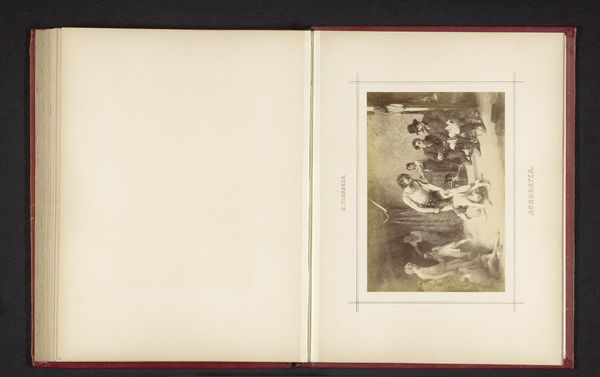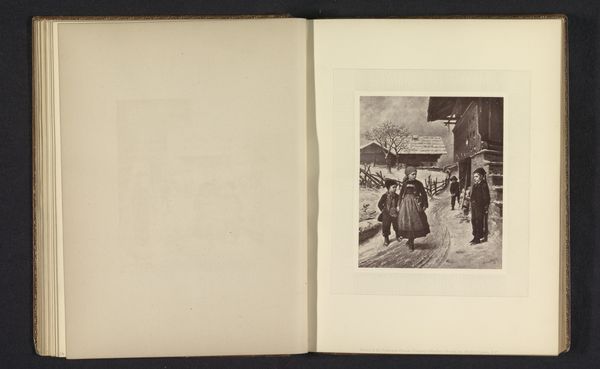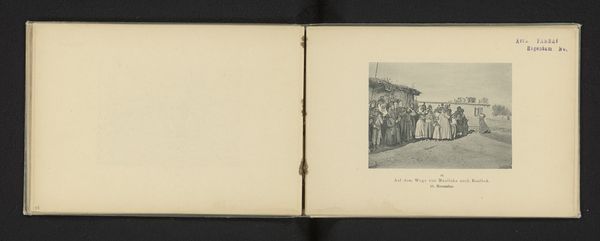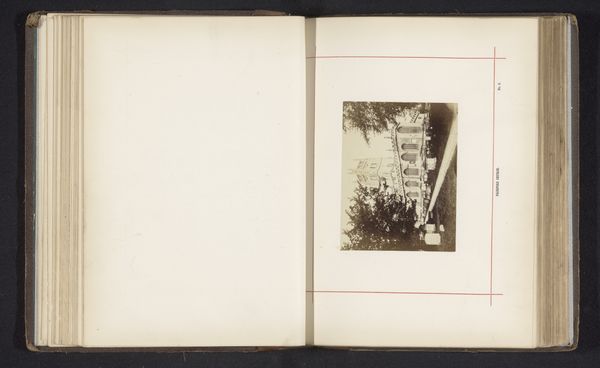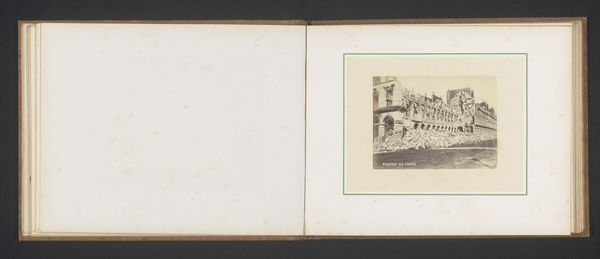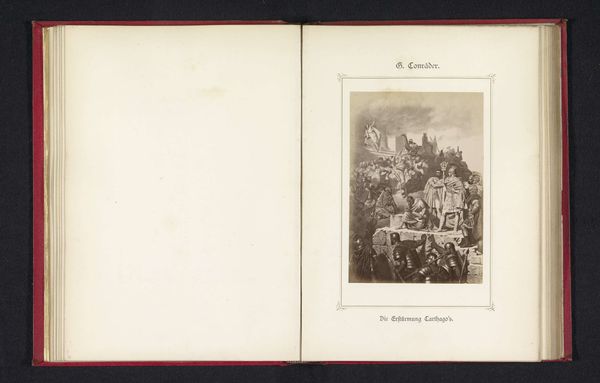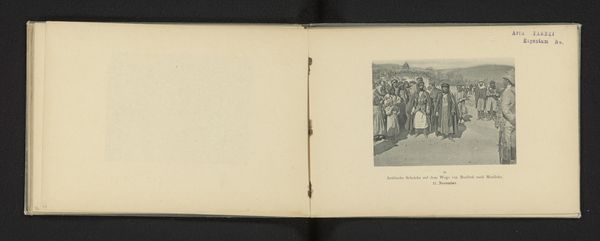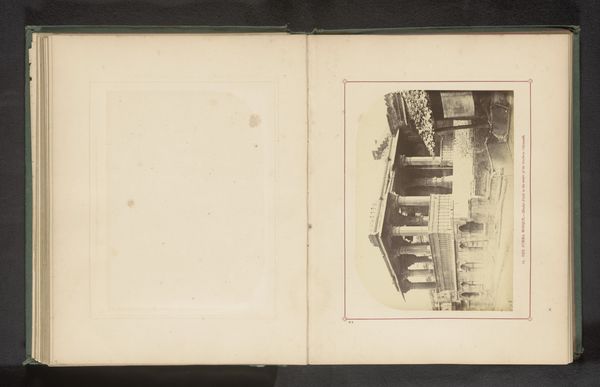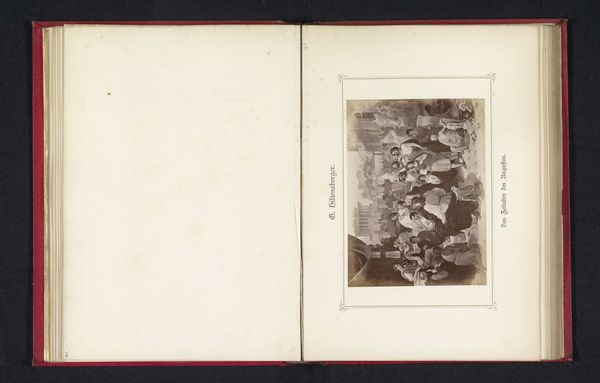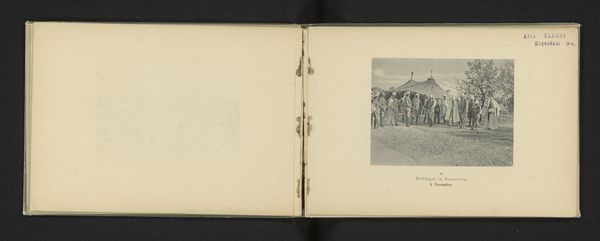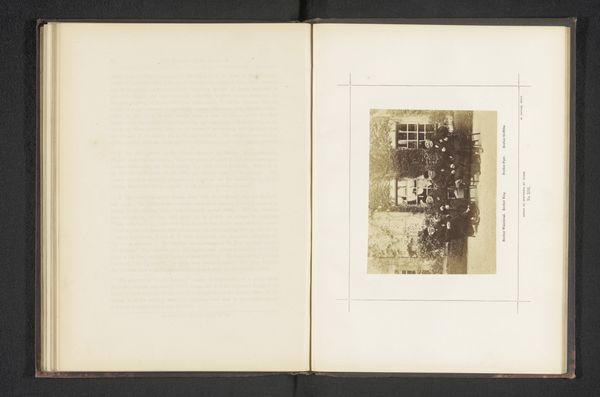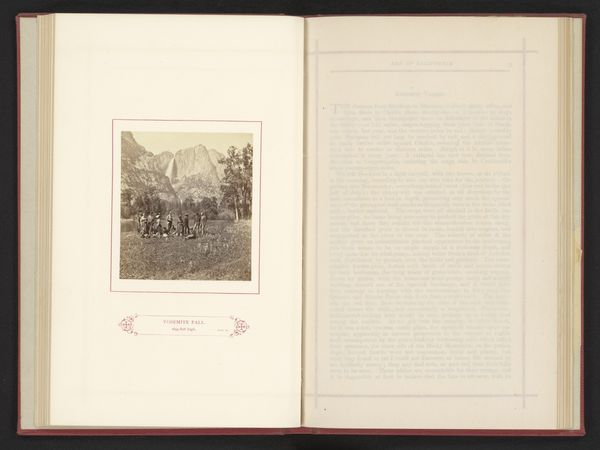
Theehuis uit Ceylon op de World's Columbian Exposition in Chicago in 1893 1893
0:00
0:00
Dimensions: height 134 mm, width 190 mm
Copyright: Rijks Museum: Open Domain
Curator: Here we have Charles Dudley Arnold's photograph, "Theehuis uit Ceylon op de World's Columbian Exposition in Chicago in 1893," taken in, naturally, 1893. Editor: My initial impression is of a very stilted record. The greyscale photography renders the whole scene in a way that feels historical, despite being a contemporary documentation at the time. It is framed in an aged book so it does not stand by itself. Curator: Precisely. The composition highlights the almost performative aspect of cultural exchange. Note the delicate typography below the image and the composition. Arnold has carefully framed the tea house—its structure, its shape a crucial element of this imported vision of Ceylon. The texture, almost thatched, roof against the implied geometry, makes the place recognizable even if without color. Editor: I see it more as a commentary on labor and cultural appropriation. This meticulously constructed "Ceylon Tea House" is at a fair, removed from the material conditions of tea production. Think of the labor, the resources extracted, and the inequalities that permitted this spectacle. Even its "authenticity" is constructed. Curator: A valid point, but consider the light and shadow—how they interplay on the building and figures, lending a dreamlike quality, but still preserving geometric coherence! The scene itself takes a special form. What message does it leave? Editor: For me, the workers’ absence is very visible; it points at global economy inequalities. We have consumers shown as an integral part of an exotic show that conceals hard realities. The fair itself a site where these narratives and exploitations got sold to the people. Curator: I think your reading is useful and powerful to explore cultural realities, but its pictorial representation transcends its socio political aspects because they converge together into an evocative narrative of time. Editor: I appreciate your viewpoint on the narrative that time is leaving. Overall, it speaks to how such historical images function in power narratives about culture and value that endure even now.
Comments
No comments
Be the first to comment and join the conversation on the ultimate creative platform.
